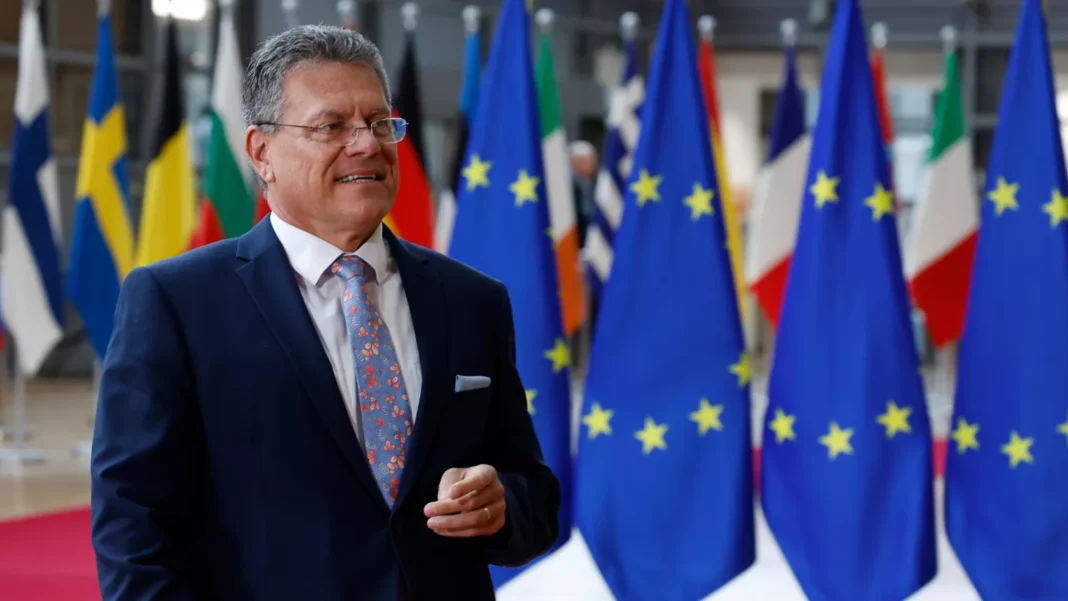In a bold response to rising tensions across the Atlantic, the European Union has fired back at U.S. President Donald Trump‘s aggressive new tariff proposal—calling for diplomacy, not dominance. After Trump threatened to impose a blanket 50% tariff on all European Union imports starting June 1, EU Trade Commissioner Maroš Šefčovič issued a pointed reminder:
“EU-US trade is unmatched and must be guided by mutual respect, not threats”
Šefčovič emphasized the EU’s ongoing commitment to a deal that works “for both,” even as the U.S. administration tightens its grip on global trade dynamics. The move marks a sharp escalation in trade rhetoric, putting long-standing EU-US relations under new pressure.
Trump’s bombshell came via social media, where he declared the EU “difficult to deal with” and signaled a clear pivot toward protectionist policy. His rationale: if China, a geopolitical rival, enjoys a reduced 30% tariff under new truce terms, then the EU—a historical ally—should be charged more.
“Our discussions with them are going nowhere,” Trump wrote. “Therefore, I am recommending a straight 50% tariff on the European Union”
Already, his administration has imposed a cascade of tariffs since March—25% on EU-made cars and steel, 10% on all other imports. A 90-day negotiation window, set to expire in July, seems increasingly futile.
For Brussels, the tone from Washington betrays a deeper frustration. Analysts point out that the U.S. wants quick, optics-driven agreements, while the EU’s more technical, regulatory process moves at a calculated pace. “The EU does not do trade deals in a few hours: this is simply not the way the bloc works,” said Agathe Demarais of the European Council on Foreign Relations.
The damage could be mutual. According to the European Commission, a 50% tariff on EU goods could trigger countermeasures of up to €95 billion, a blow that would ripple through both economies. Already, the EU’s economic forecast assumes a baseline 10% tariff will linger, projecting sluggish 0.9% growth in the eurozone.
Beyond the EU, Trump’s pressure campaign extends to Silicon Valley. Apple, previously spared the brunt of the tariff storm, found itself in the spotlight. The president warned CEO Tim Cook that future iPhones should be made in the U.S.—not India—or face a 25% import duty. This message, delivered bluntly in the same social poststorm, came as Apple realigns supply chains to avoid tariffs tied to China.
Markets were swift to react. U.S. stock futures dropped sharply, and major European indexes fell between 1% and 2.5% by mid-afternoon. The fallout from Trump’s trade maneuvering may just be beginning.
Meanwhile, the EU remains resolute. Its latest trade papers, shared with U.S. counterparts, underline non-negotiable positions—particularly on agriculture, where food safety standards remain fiercely protected. Hormone-treated U.S. meats, for example, continue to be barred from European markets.
What comes next could shape not just transatlantic trade—but the future of global economic cooperation. If a tariff war ignites, it won’t be waged with tweets alone.


